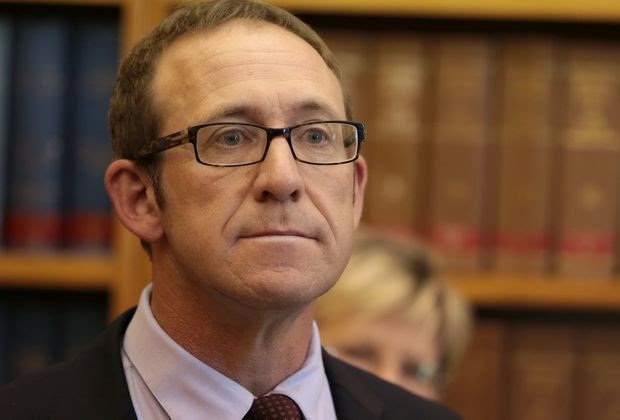
Don’t listen to Jacinda’s rhetoric about how only the top 20% of taxpayers will pay CGT. That 20% will include a lot of people who are far from wealthy. It will include people with small businesses, with lifestyle blocks and with KiwiSaver. As everyone who has a KiwiSaver account will be affected on an annual basis, her claim that only the top 20% will be affected is incorrect anyway. quote.
In his first big economic speech of the year, at least Finance Minister Grant Robertson acknowledged there is an issue for this country at the moment. Like all good relationships, he said, there will be issues arising from time to time that have to be dealt with and we can’t shy away from those.
Exporters were encountering issues around softening demand and there were regulatory issues with China, which is shorthand for trouble at the border.
And the elephant trumpet in the room full of suits of course couldn’t be ignored.
Robertson unwittingly confirmed the reaction to the Taxation Working Group’s report is causing some consternation on the upper floors of the Beehive. end quote.
Honestly, I just don’t get these guys. They have had plenty of warning that CGT is political suicide, but they are so governed by their socialist ideology, they seem to think that we will all come to our senses and realise that they know best. It won’t happen.quote.
When one politician repeats verbatim what another one has said, the orchestration of the response is obvious. Think of the National Party parrots at the height of the bullying allegations. Both Simon Bridges and his sidekick Paula Bennett were word-perfect, emphasising the “strong culture” in the party and that “people liked coming to work”.
They’d been schooled – just like Labour’s been over the working group’s recommendations.
Robertson’s buddy boss Jacinda Ardern told us after Cabinet that “by and large the New Zealand tax system works well”, a line repeated word for word by the Finance Minister to the business boffins. end quote.
It does work well. Compared to many tax systems around the world, it is relatively simple… something that will change dramatically with the introduction of CGT. quote.
And they were both at pains to point out the Government wasn’t bound to take up all of the working group’s recommendations, which in real speak means the end result won’t resemble the beginning. In fact it’ll be vastly different once the coalition cobbers, in particular Labour and New Zealand First, have a roll on the grass. end quote.
The end result will probably be very different now, but only because the reaction to CGT has been so negative. Remember how the TWG said they couldn’t make CGT work, and Grant Robertson told them to go back and try harder? quote.
The view of James Shaw of the Greens – that the Government doesn’t deserve to be re-elected if it doesn’t adopt a capital gains tax – won’t be that difficult to resolve. As Winston Peters has repeatedly said, we already have a capital gains tax, it’s called the brightline test.
A Newspaper end quote.
That is where I think this whole debacle will end up. All businesses will be exempt, and possibly shares because we have long been told to invest in productive assets. The ridiculous attempts to tax the family home by any means possible will be thrown out, meaning lifestyle blocks and homes that have had rooms rented or used as an office will be exempted. Retirement savings, including KiwiSaver, will be exempted on the grounds that people must be encouraged to save for retirement. Farms will be left alone. That only leaves investment property, which has been the focus of this whole exercise from Day 1 anyway. We will end up with a perpetual Bright Line Test.
This will finish off the private rental market, and will leave hundreds of thousands of people with nowhere to live. Yes, those rental houses that are sold will go to first time buyers, but there will always be a pool of people who need to rent. Some people will never own their own house, and some will need temporary rental accommodation. Either way, it is more bad news for tenants, as landlords sell up in droves and take their nice, juicy capital gains with them before the tax is introduced. This is what socialist ideology does to our society.












